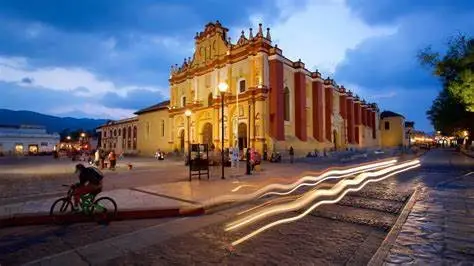Immersed in a decades-long fight, violence is increasing in one of the communal areas of the municipality of Tila, a route for migrants to the Gulf

Violence is on the rise in the northern part of Chiapas, in the Tulijá valley region, neighbouring Tabasco. Armed men dressed in camouflage have attacked and burned houses in the municipal capital of Tila on Tuesday and Wednesday, causing fear in the population. In videos taken from the houses, some of them can be seen aiming at houses, shooting, breaking into them, breaking windows… An affected neighbour, who speaks on condition of anonymity, says that the attackers burned his house on Wednesday. “We survived by a miracle,” he says.
The shootings have been taking place in the municipal capital of Tila since Tuesday night. “The explosions began at around 8:00 p.m., bursts of gunfire could be heard in various points of the municipal capital, both on the outskirts and in parts of the centre. Screams could also be heard, although we did not know who they were. On Facebook they started saying that there were armed people in the centre. Then they started burning houses,” says the neighbour. With 83,000 inhabitants, Tila is one of the most important municipalities in the region. 98% of these inhabitants live in poverty, according to Coneval.
The conflict in Tila, which is predominantly Mayan Ch’ol, reflects that of other municipalities in nearby regions, such as Chenalhó, Simojovel or Pantelhó… In this last municipality, elections were not held because of the road that connects it to San Cristóbal de las Casas being blocked. Days before, four men had been murdered in the town. And a few weeks before, in April, clashes between the self-defense group El Machete and a criminal organization forced the Army to rescue teachers, trapped in schools by gunfire.
In any case, violence in the Los Altos region and the northern zone in general is not an exception. The entire border area with Guatemala, from Frontera Corozal to Tapachula, and the foothills of the Sierra Mariscal, are in jeopardy due to the struggles of criminal groups, linked in one way or another to the two major criminal franchises in the country, the Sinaloa Cartel and the Jalisco Nueva Generación Cartel (CJNG). In Chicomuselo, near the border, gateway to the mountains, elections were also not held due to the violence of recent weeks.
In the case of Tila, the complexity is maximum. At this point, it is difficult to identify the group to which the attackers belong, much less indicate their affiliation. A long battle for 130 hectares of land is at the origin of a conflict that has lasted decades, but has worsened since the second half of last year, with clashes such as those of these days and murders of community leaders, such as Carmen López, member of the National Indigenous Council, in January.
The fight for land is the common thread. On the one hand, there is the Tila ejido, a communal territory, part of the municipality, endowed with 5,405 hectares. And on the same side, also, the ejidatarios, their children, grandchildren… In addition, there are residents in the ejido, a population without the right to land, but who have put down roots there. On the other side are the municipal authorities and the power they hold, intermediaries for years of the Government’s social programs, first with the PRI and then with the Green Party.
The municipal authorities have also gone hand in hand with the economic powers of the region, mainly the builders and transporters, as explained by the academic Emilio Pérez, in two works published on the conflict in the municipality between 2018 and 2022. The clash between both parties, he says, arises from the occupation by the municipal authorities of 130 hectares of the ejido. At first, the Government was going to compensate the ejido for this occupation and the community authorities agreed. But then everything changed.
The ejido authorities discovered that the lawyer representing their interests had deceived them regarding the amount of payment that the Government was going to deliver, a situation that provoked a radical reaction: the ejido, encouraged and morally rearming itself after the irruption of the EZLN, no longer wanted the money, they wanted their land back. The battle experienced a moment of great tension at the end of 2015, when the ejidatarios expelled the municipal authorities from the ejido. Since then, everything has been violence in the area, from the municipal authorities to the ejidatarios and between the split groups of ejidatarios, pressured from outside by big capital.
As Pérez explains: “From being an agrarian conflict it escalated into a more complex process, where the project of autonomy and self-government converge (…) Given the lack of attention from the State institutions to address the problem, the tension escalated to the point of constant confrontations between the ‘autonomous ejidatarios’ and the so-called ‘settlers’, supporters of the Green Party and the ejido board, which has official recognition before the National Agrarian Registry.”
In the last few hours, local media in Chiapas have pointed to the group of autonomous farmers for the attacks perpetrated in the municipal capital, which is also the population center of the ejido. The reason for this latest wave of attacks is not very clear, whether it is related in some way to the elections last Sunday or points more to local dynamics. Meanwhile, on Wednesday night, the attacks continued.
Source: elpais







